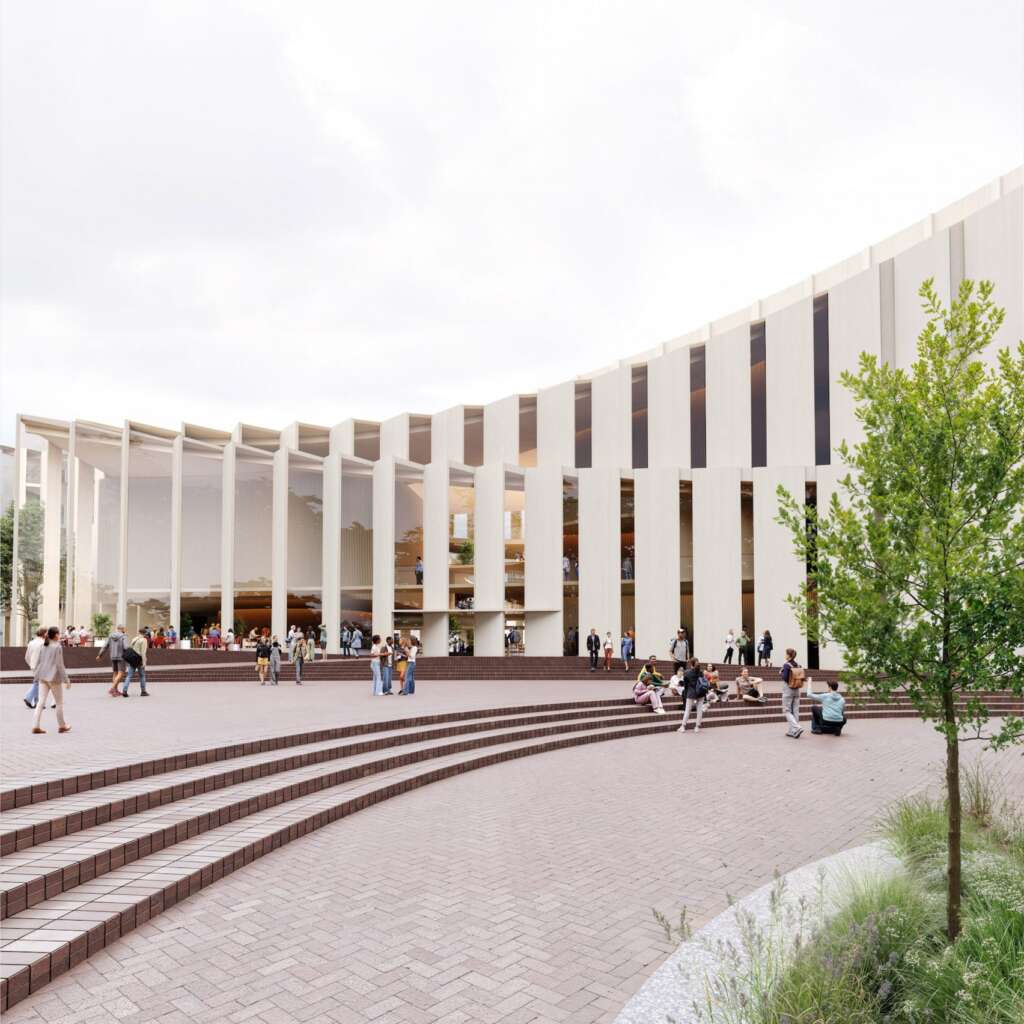Share This Article
Discover how Snøhetta and Benthem Crouwel Architects are transforming Delfzijl, Netherlands, with the House of Culture and Administration—a striking civic landmark that blends sustainability, transparency, and community life.
A New Chapter in Civic Design
The Dutch city of Delfzijl is about to welcome a landmark that redefines how we think about civic spaces. Designed by internationally renowned firms Snøhetta and Benthem Crouwel Architects, the new House of Culture and Administration isn’t just a government building—it’s a community hub, a cultural venue, and a symbol of openness and transparency.
This powerful collaboration aims to revitalise Delfzijl’s city centre while addressing its evolving social and administrative needs in one unified space.
What Is the House of Culture and Administration?
Located in the northeast of the Netherlands, the House of Culture and Administration brings together multiple public functions—a library, theatre, city offices, and public meeting spaces—into a single, integrated building.
It’s designed as part of a broader strategy to strengthen Delfzijl’s civic identity, offering residents a welcoming space to gather, learn, work, and participate in community life. This is not just architecture for function—it’s architecture for connection.
A Building That Mirrors the City’s Spirit
From the very first glance, the building’s design speaks of openness and clarity. The façade features a rhythmic grid of tall, vertical columns, creating a sense of transparency while offering a soft filter between the interior and the public square outside.
The choice of material—a warm terracotta-coloured concrete—echoes the earthy tones of the local landscape, grounding the building firmly in its environment. The overall form, though striking, feels approachable. It doesn’t dominate the skyline but rather invites interaction.

Architecture That Encourages Belonging
Step inside, and you’re greeted by a generous public atrium—a central heart for the building. With its wide staircase, open sightlines, and casual seating, the atrium serves as a space where residents can linger, meet, or simply observe civic life unfolding.
Here, the boundaries between government and citizen blur. The transparency of the layout reflects democratic values—emphasizing accessibility, participation, and inclusiveness.
Blending Culture and Administration
What makes this project unique is its combination of culture and administration under one roof. The library and theatre share the same spaces as city officials and public servants. This creates a dynamic mix of users and encourages cross-pollination between culture, policy, and everyday life.
Instead of keeping cultural venues and government functions separate, the building promotes the idea that culture is central to good governance and community well-being.
Sustainability at Its Core
In true Scandinavian and Dutch architectural tradition, sustainability is a major pillar of the project. The design integrates natural ventilation, daylighting, low-carbon materials, and a compact footprint to minimize its environmental impact.
The building is oriented to make the most of sunlight, reducing energy use for lighting and heating. Materials are chosen for their durability and recyclability, supporting a long lifecycle and minimal maintenance.
This project demonstrates that sustainable architecture doesn’t have to compromise on beauty or purpose—in fact, it can enhance both.
Why Delfzijl—and Why Now?
Delfzijl is a small but historically rich city facing the challenges of a shifting economy and changing demographics. By investing in this hybrid civic space, the city signals a clear vision for the future—one rooted in community engagement, environmental responsibility, and civic pride.
The House of Culture and Administration is not just about housing functions. It’s about giving citizens a space where their voices matter and their culture is celebrated.
Let’s Rethink What Public Spaces can be
The House of Culture and Administration in Delfzijl is a testament to what architecture can do when it’s thoughtful, inclusive, and collaborative. With Snøhetta’s global sensibility and Benthem Crouwel’s local insight, the building is set to become a model for 21st-century civic design.
It invites us to rethink what public buildings can be—not just places to process paperwork, but spaces to experience culture, meet others, and feel a part of something larger.
As Delfzijl looks to the future, this building will stand not just as a structure—but as a story of renewal.
Source: https://www.dezeen.com/2025/07/14/snohetta-benthem-crouwel-house-of-culture-administration/

